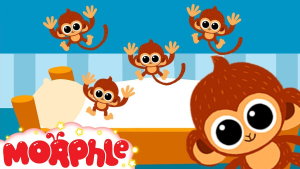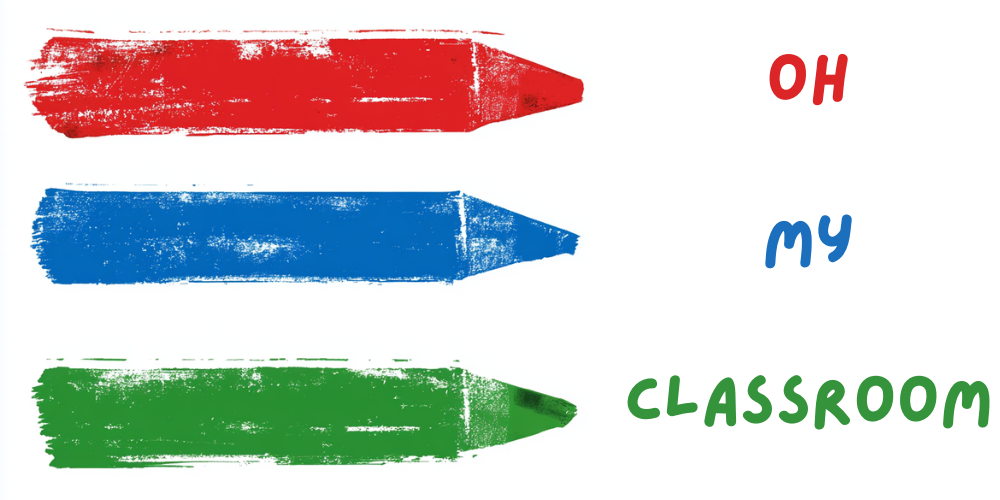As your cheerful guide, I’m excited to unveil a series of interactive activities designed to make learning about the number 5 a delightful adventure.
These activities are not only fun but also promote their understanding of numbers, counting, and basic math concepts.
So let’s explore some exciting number 5 activities for preschoolers.
Activity 1: Five Little Monkeys Jumping on the Bed

One classic and engaging activity for preschoolers is the “Five Little Monkeys Jumping on the Bed” game. Start by gathering a group of toy monkeys or use cutouts of monkeys. Draw or print a picture of a bed and number each monkey from 1 to 5. They can take turns placing the monkeys on the bed and making them jump off one by one until all five have fallen off.
Activity 2: Five Senses Exploration

Exploring the five senses is an excellent way to incorporate the number 5 into preschool activities. Set up sensory stations representing each sense: sight, hearing, taste, touch, and smell. For example, at the sight station, provide a variety of colorful objects for the children to observe and count. At the touch station, offer different textured materials for tactile exploration.
Activity 3: Five-Finger Painting

Get creative with finger painting! Provide each child with a sheet of paper and non-toxic paint in five different colors. Instruct them to dip their fingers into one color at a time and create artwork using their fingers as brushes.
Activity 4: Five-Frame Counting

Introduce preschoolers to the concept of counting and basic addition using a five-frame. Create a large five-frame on a poster board or use a printable template. Give the children counters or small objects such as buttons or beads. Instruct them to place the objects into the five-frame, starting with one object and gradually increasing the number to five.
Activity 5: Five Little Ducks Pond

Play Bring the popular nursery rhyme “Five Little Ducks” to life with a pond play activity. Set up a pretend pond using a large container filled with water. Create or use toy ducks numbered from 1 to 5 and place them in the pond.
Activity 6: Five-Step Obstacle Course

Create a fun and active obstacle course with five steps for preschoolers to conquer. Set up five stations, each representing a different activity or challenge, such as hopping on one foot, crawling under a tunnel, jumping over a line, balancing on a beam, or throwing a beanbag into a target. The children can move from one station to another, completing each activity five times.
Activity 7: Five-Ingredient Snack

Provide a simple recipe with five ingredients, such as fruit skewers with five different types of fruits or mini sandwiches with five toppings. Guide the children as they count and add each ingredient, emphasizing the number 5 throughout the process.
Activity 8: Five-Shape Scavenger Hunt

Create a list of five different shapes, such as circle, square, triangle, rectangle, and star. Provide the children with magnifying glasses or a simple drawing of each shape. As they find objects, they can count and record how many items they discovered for each shape.
Activity 9: Five-Page Counting Book

Guide preschoolers in creating their very own counting book with five pages. Provide each child with blank paper or a small notebook. Instruct them to draw or paste pictures representing different objects or animals on each page. They can then write or trace the number and name of the corresponding item, focusing on numbers 1 to 5.
Activity 10: Five-Jump Number Line

Create a number line on the floor or use a long piece of string and tape. Mark the numbers 1 to 10, focusing on the numbers 1 to 5 for this activity. Instruct the preschoolers to take turns standing at the starting point and jumping forward, counting aloud as they land on each number.
Activity 11: Five-Piece Puzzle Challenge

Engage preschoolers in a puzzle challenge using five-piece puzzles. Provide a variety of five-piece puzzles with colorful and engaging images. Encourage the children to work on the puzzles independently or in small groups, assembling the pieces to create a complete picture. As they complete each puzzle, they can count and identify the image on the puzzle piece.
Activity 12: Five-Sense Sorting

Explore the five senses through a sorting activity. Gather a collection of objects that represent each sense, such as a soft feather (touch), a small bell (hearing), a slice of lemon (taste), a fragrant flower (smell), and a colorful picture (sight). Mix up the objects and have the preschoolers sort them into five different baskets or containers based on the corresponding sense. As they sort, they can count the objects in each basket and discuss their sensory characteristics.
Activity 13: Five-Step Dance Routine

Encourage preschoolers to get their bodies moving with a five-step dance routine. Select five simple dance moves or actions, such as jumping, clapping, spinning, marching, and twirling. Teach the children each step and then put them together to create a short dance routine. As they perform the routine, they can count and repeat the moves five times.
Activity 14: Five-Color Collage

Provide a variety of colored papers or magazines and instruct the children to cut out shapes or pictures in five different colors. They can then glue the cutouts onto a larger sheet of paper or cardboard, arranging them in a visually pleasing collage. As they work, they can count and name the colors they are using.
Activity 15: Five-Word Storytelling

Gather a collection of picture cards or objects representing different scenes or characters. Encourage the preschoolers to take turns selecting a card or object and using only five words to tell a story related to the image. As they share their stories, they can count the words they use and challenge themselves to be creative within the given limit.
Activity 16: Five-Object Memory Game

Engage preschoolers in a memory game that focuses on five objects. Gather five small objects or pictures and place them in a row. Give the children a few moments to observe and memorize the objects. Then, cover the objects or remove them from sight. The children take turns trying to recall and name the five objects they saw.
Activity 17: Five-Step Sequencing Cards

Create sequencing cards with five steps for preschoolers to arrange in the correct order. Design or print out cards that depict simple activities such as brushing teeth, planting a seed, or making a sandwich. Shuffle the cards and have the children place them in the correct sequence from start to finish.
Activity 18: Five-Bead Abacus

Introduce preschoolers to the concept of counting and basic math using a simple five-bead abacus. Create an abacus using a string and five beads. Demonstrate how to slide the beads back and forth to count from 1 to 5 and vice versa.
Activity 19: Five-Shape Scavenger Hunt

Extend the shape scavenger hunt by focusing on the number 5 and its relationship to shapes. Provide a list of five shapes, such as circle, square, triangle, rectangle, and pentagon. Ask the children to search for objects or drawings that represent each shape on the list. They can count and record how many items they find for each shape.
Activity 20: Five-Foot Hopscotch

Create a giant hopscotch grid with five squares for each foot. Draw the hopscotch grid on a flat surface using chalk or tape, ensuring that each square is large enough for a child to stand in comfortably. Label the squares from 1 to 5.
Activity 21: Five-Frame Addition

Expand on the five-frame activity by introducing an addition to preschoolers. Use a large five-frame or create one on a whiteboard or poster board. Provide counters or small objects. Start with a number, such as 3, and ask the children to place that many counters in the frame. Then, ask them how many more are needed to make 5.
Activity 22: Five-Book Countdown

Engage preschoolers in a countdown to reading with a collection of five books. Gather five age-appropriate books and arrange them in a stack. Each day, encourage the children to choose and read one book from the stack. As they read, they can keep track of the number of books remaining, counting down from 5 to 1.
Activity 23: Five-Step Building Challenge

Provide preschoolers with building materials, such as blocks or LEGO bricks, and challenge them to build structures using only five pieces. As they build, they can count the number of pieces they used and describe their creations.
Activity 24: Five-Animal Yoga

Introduce preschoolers to the world of yoga by incorporating five animal poses. Teach the children five simple animal-inspired yoga poses, such as cat, cow, downward dog, cobra, and butterfly. Guide them through a series of movements, encouraging them to hold each pose for five breaths.
Activity 25: Five-Step Simon Says

Put a numerical twist on the classic game of Simon Says by incorporating five-step commands. Choose one child to be “Simon” and guide the others through a series of actions consisting of five steps. For example, Simon might say, “Simon says: Take five hops forward, touch your nose five times, spin around five times, clap your hands five times, and give five high-fives to your friend.” The children must follow the instructions exactly and count each step aloud.
Related:
Number 1
